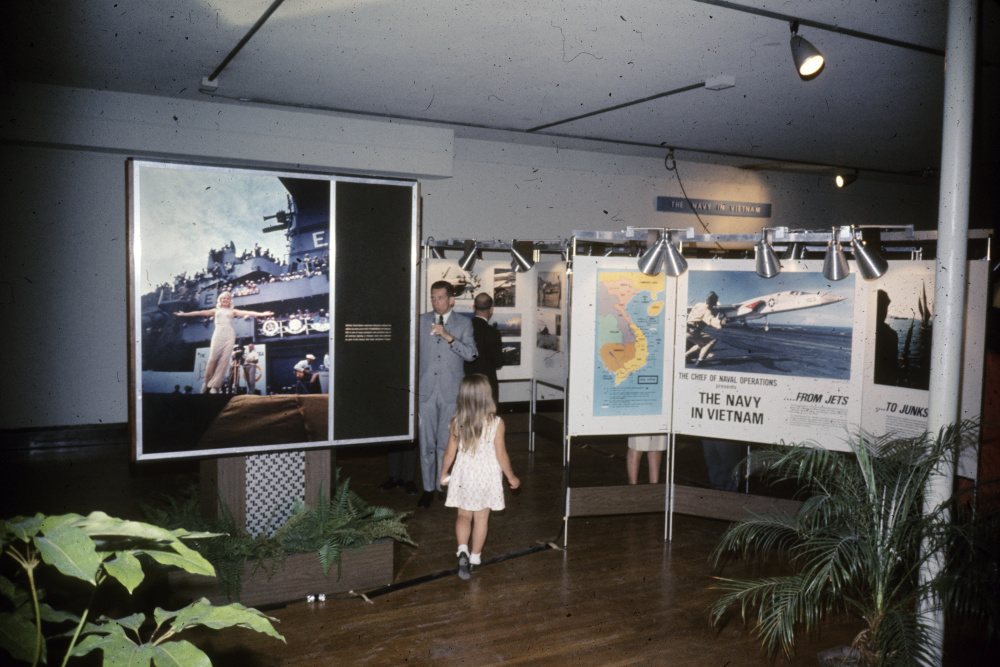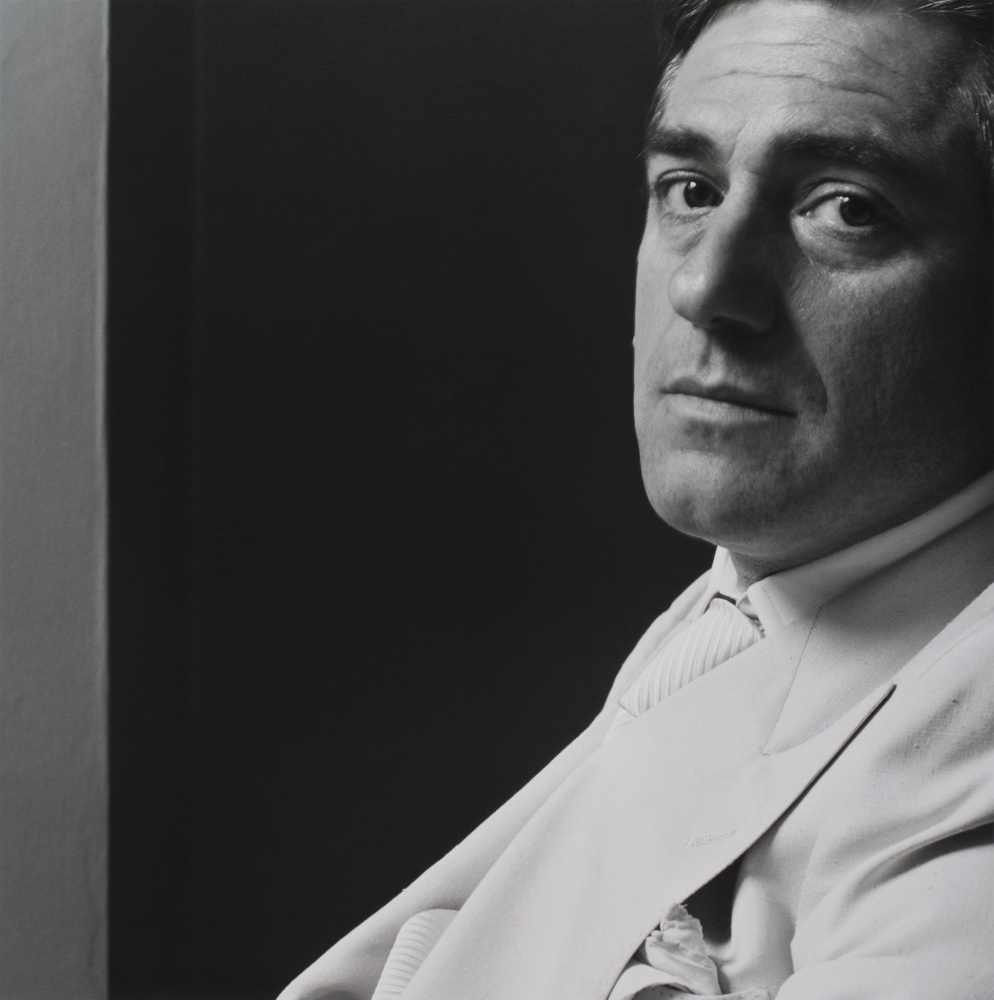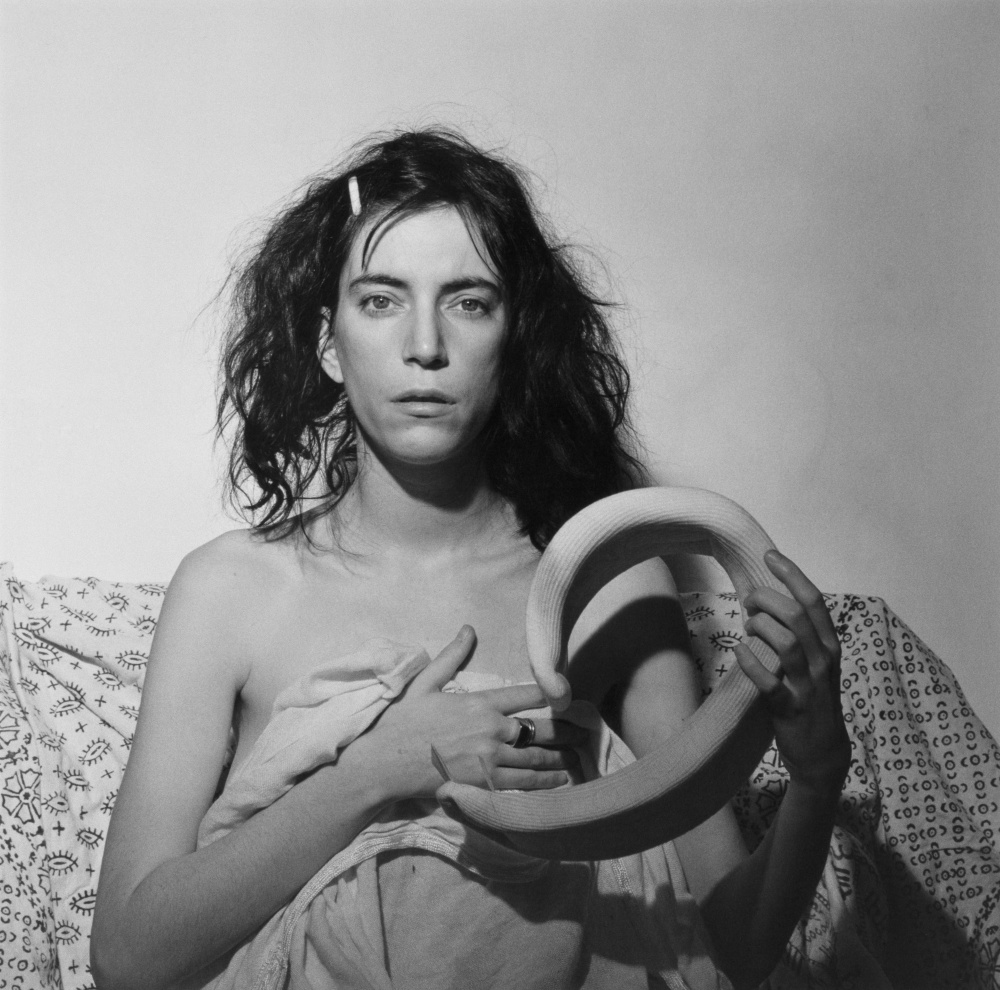- Open today, noon to 5 pm.
- Parking & Directions
- Free Admission
Mapplethorpe’s Miracles
–Seth Feman, PhD, Deputy Director for Art & Interpretation and Curator of Photography
Walter P. Chrysler, Jr. was a voracious art collector, but he only had a modest interest in photography. Before his arrival in Norfolk, the Norfolk Museum of Arts and Sciences periodically exhibited the work of the Norfolk Photographic Club and military-related photography, including a 1967 show of naval activity in Vietnam curated by soldier, artist, and curator Edward Steichen. As early as December 1971, the Museum exhibited photographs from Walter Chrysler’s collection, which included major works by Steichen and Eugene Atget as well as a series of photographic portraits of the painters and sculptors Chrysler knew personally and collected.

Photographs of the Navy in Vietnam, Selected by Edward Steichen, July, 1967
Despite this early interest in photography, the Chrysler Museum’s unflinching commitment to the medium can be traced to two exhibitions that came years later in 1978. One was a display of photographic masterworks from a private collection that inaugurated the Museum’s first dedicated photography space: the Sol B. Frank Memorial Gallery of Photography. Through November 28, that gallery is home to an exhibition of murals by Edward Steichen, no less.

A Collector Collects: Fifty Photographs from a New York Private Collection, the inaugural exhibition of the Sol B. Frank Memorial Gallery of Photography, November 1978 –January 1979.
The other was Robert Mapplethorpe: Photographs, which marked the young photographer’s first-ever museum exhibition and catalog. As we mark World Photography Day, we take a look back at Mapplethorpe’s groundbreaking exhibition and what it reveals about the early days of the Chrysler Museum of Art.

Mario Amaya, director of Chrysler Museum; Robert Mapplethorpe, photographer; and Mr. Witt. ca. 1978.
The Mapplethorpe exhibition was a bold display of thirty-seven photographs that demonstrated the artist’s wide-ranging interests at an early stage in his career. The largest group of images focused on celebrities and art world glitterati—a who’s who of the 1970s jet-set scene—including dancer Lucinda Childs, fashion designer Giorgio di Sant’ Angelo, artist Brice Marden, composer Philip Glass, and a youthful Arnold Schwarzenegger flexing his triceps in a skimpy speedo, among many others. Three works depicted musician and poet Patti Smith, Mapplethorpe’s former girlfriend and lifelong collaborator and muse, and other pieces presented the artist’s captivating flower studies with depictions of lilies, tulips, and chrysanthemums. The exhibition also featured homoerotic images, like one of Peter Berlin baring his chest on Fire Island. Two images, Jim and Cedric, were more sexual and would be included Mapplethorpe’s controversial X Portfolio. Jim depicts a shirtless man in leather pants, gloves, and an S/M mask squatting next to a ladder. Cedric, a more subtle sexual image, appeared on the cover of the exhibition catalogue and shows the top of a man’s bald head bowed forward toward the camera.
The Chrysler Museum’s show did not include Mapplethorpe’s most provocative images—those that depict sexual and sadomasochistic acts. Those works would become notorious about a decade later when Sen. Jesse Helms sent them to other congressional representatives in his efforts to defund the National Endowment for the Arts and when Dennis Barrie, then director of the Contemporary Arts Center in Cincinnati, was arrested on obscenity charges for exhibiting them in 1990.
Mapplethorpe’s name has largely become synonymous with his sexually overt images and the controversy that emerged around them. Yet, the Chrysler’s early display of Mapplethorpe’s work—along with several recent exhibitions, including Implicit Tensions: Mapplethorpe Now at the Guggenheim and Robert Mapplethorpe: The Perfect Medium at the Los Angeles County Museum of Art and the J. Paul Getty Museum—points to a different, often forgotten story about the queer networks that are a part of the larger art world’s history as well as Chrysler’s.

Robert Mapplethorpe (American, 1946–1989), Mario Amaya, 1978, Gelatin-silver print, Gift of the Robert Mapplethorpe Foundation © Robert Mapplethorpe Foundation, 2007.9
The very idea of hosting a Mapplethorpe exhibition at the Chrysler owes itself to these networks. The exhibition was curated by Mario Amaya, the director of the Chrysler Museum from 1976 to 1979. Amaya knew Mapplethorpe and Patti Smith, along with several other people depicted in the show. He acknowledged the challenge of producing a show of a friend’s work in the catalog: “When you have known an artist as a friend for many years, it is difficult to talk or write about him. You accept him as an extension of your own world, rather than his.”
Amaya went on to discuss two photographs in the show of people he knew directly. The subjects, John McKendry and Norman Fisher, were nearing death. Amaya considered the works to be masterpieces, admitting that it may have been because he knew the subjects so well. Mapplethorpe depicted McKendry in the hospital, and as Amaya describes, the resulting image, like Mapplethorpe’s finest works, is successful because it shows the melding of the artist’s and his subject’s desires: “Mapplethorpe allows his sitters to project, through long and exhausting sessions, the sitter’s fantasies of himself, while the artist waits for the moment when he can fix the image that unites with his own fantasies of the subject. It is at the precise moment when both connect at the click of a shutter that Mapplethorpe’s miracles happen.”

Robert Mapplethorpe (American, 1946 – 1989), Patti Smith (Neckbrace), New York, 1977, Gelatin silver print, Gift of the artist © The Robert Mapplethorpe Foundation, Inc., 78.418A
Amaya went on to describe Mapplethorpe’s interest in contrasts: “Mapplethorpe is best known both for his portraits of the rich and famous and for his investigations into the darker side of sexual fantasy… Mapplethorpe casts them from the same mold. The polished world of high fashion and country-house living seems as hard and brittle as the underworld of burnished chains and studded leather.”
In saying this, Amaya might have been implicating himself, recognizing how his own elite position in the art world was as complex and even compromised as Mapplethorpe’s other subjects. Indeed, some years after the exhibition, the Robert Mapplethorpe Foundation donated his 1978 portrait of Amaya to the Museum’s collection, where it joined two photographs—an image of Patti Smith and of Lady Rose Lambton—that were donated by the artists at the time of the exhibition.

Robert Mapplethorpe (American, 1946–1989), Lady Rose Lambton, 1976, Gelatin silver print (photograph), Gift of the artist © The Robert Mapplethorpe Foundation, Inc, 78.418b
On the heels of the exhibition, the Chrysler deepened its commitment to photography, inaugurating the Sol B. Frank Memorial Gallery of Photography and launching a series of shows that left no doubt about the importance of photography to the art world and to the Museum alike. As Chief Curator Eric Zafran wrote in the catalog of the first Frank Memorial Gallery exhibition (quoting New York Times critic Hilton Kramer), photography now “commands the kind of attention that our culture reserves for phenomena of a special appeal—for objects that elicit a sense of excitement and discovery about the emotions and ideas that are felt to govern the very terms of our existence.”
Over the intervening decades, the Chrysler has grown its photography collection to include more than 6,000 works that span the entire history of the medium. The Museum also offers several photographic exhibitions a year. Currently, visitors can see photographs scattered throughout our permanent galleries and in Edward Steichen: In Exaltation of Flowers, an exhibition that focuses on the photographer’s painted murals. In the fall, we’ll present several new and upcoming additions to the photography collection in Building A Legacy: Chrysler Collects for the Future, and in the winter, we will open FloodZone: Photographs by Anastasia Samoylova, an exhibition that uses photography to explore the relationship between urban development and sea-level rise.

